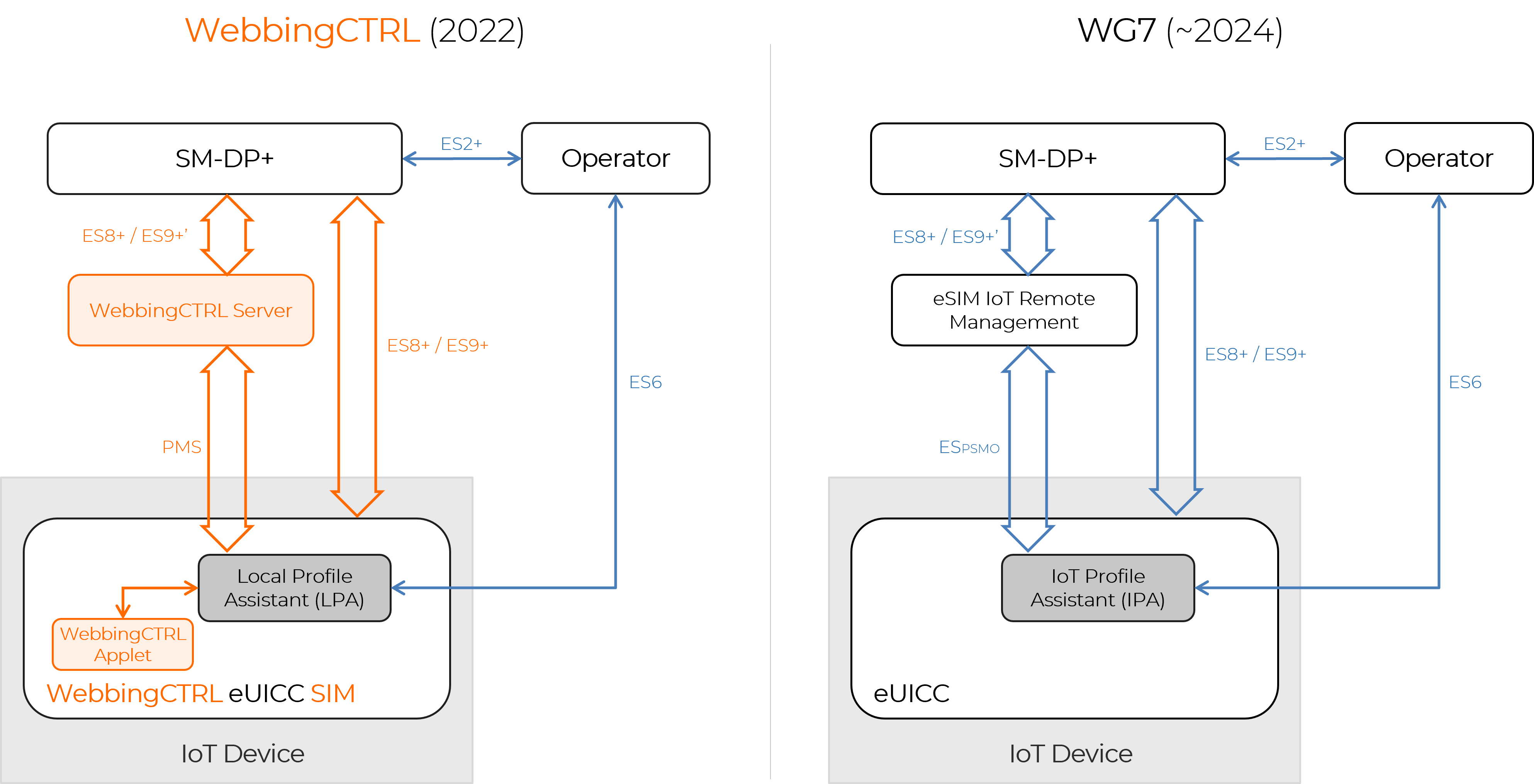by Baruch Pinto
In April of this year, the Global System for Mobile Communications Association (GSMA) Working Group 7 (WG7) published a requirements document for remote provisioning of eUICCs in Network Constrained and/or User Interface (UI) Constrained IoT Devices, “SGP.31 eSIM IoT Architecture and Requirements Specification”. This new specification complements the existing specifications for M2M (GSMA SGP.02) and Consumer (GSMA SGP.22) eSIM Standards. The new requirements come in light of the slow adoption of the M2M eSIM Standard implementation due to its cumbersome ecosystem.
The new specification for IoT eSIM provisioning adapts the current Consumer eSIM Standard to allow remote control and configuration of the eSIM via a dedicated management module, replacing the user interaction currently required for provisioning. This enhancement simplifies IoT connectivity and reduces time to market for IoT deployments as it eliminates the need for carrier integration. In addition, it provides enterprises with the same flexibility and control that consumers have. This is a huge advancement for IoT implementations, but it will only be available in a few years when the standard is formalized and approved for use.
Webbing Foresaw the Future
eSIM technology is an important building block for connected devices. Many organizations in the IoT domain have products that can be deployed worldwide and require cellular connectivity. These devices can be equipped with an eSIM that can store multiple profiles, swapping between the profiles when there is a disruption of service or upon entering regulated countries mandating use of a local profile. To benefit from this capability, organizations require a centralized way to manage the eSIM and profile inventory and need visibility into their data usage.
Deploying the M2M eSIM Standard in such devices is usually challenging as swapping between profiles is cumbersome and not necessarily automated, requiring cooperation with the serving carrier in each location. Not to mention the significant up-front investment to enable network components to deal with profiles and provisioning. A simpler and more cost-effective approach is to use the Consumer eSIM Standard. However, using Consumer eSIMs and following the SGP.22 standard is also challenging, as it requires user consent to download profiles and when swapping profiles, which is usually not possible in many IoT device.
To overcome these challenges, Webbing developed WebbingCTRL, a solution for the IoT domain that follows the concept of the Consumer Standard (SGP.22), adapting it for use in IoT devices without a User Interface. It allows for a remote, automatic profile swap process with no user intervention, a centralized way to manage eSIM and profile inventory, as well as visibility into device data usage.
The solution is comprised of a WebbingCTRL eSIM and a WebbingCTRL Server. The eSIM can store multiple profiles downloaded from different carriers. The Server provides profile management capabilities that mimic the User interaction in the Consumer Standard as well as lifecycle management of the profiles downloaded on to the eSIM.
Smart Profile Management for Seamless Connectivity
The WebbingCTRL eSIM has been enhanced with Webbing’s proprietary profile management applet that supports an automatic profile swap process between the stored profiles, based on network status and pre-defined, customizable business rules. This ensures the device is always connected to the network with the appropriate profile in its specific location. When traveling between countries, the auto swap process will connect the device to the local network adhering to the rules defined by the customer and thus providing the best service and cost. Business rules can also be set that initiate the auto swap process to a fallback profile should there be disruption in connectivity.
The applet on the eSIM communicates with the WebbingCTRL Server. The Server provides profile management capabilities, including profile inventory and lifecycle management. Specific business rules that govern the automatic profile swap process are defined in the Server. It also provides visibility to profile usage and network events.
When comparing the WebbingCTRL Solution with the GSMA SGP.31 requirements document, many similarities can be identified, both in the architecture and the required functionality. Built on the existing SGP.22 specifications, which is the major reference in GSMA SGP.31, WebbingCTRL is secure by design and has expanded capabilities to meet the needs of IoT deployments. The WebbingCTRL Server is equivalent to the eSIM IoT Remote Manager (eIM); the Local Profile Assistant (LPA) in the WebbingCTRL eSIM is equivalent to the IoT Profile Assistant (IPA).

WebbingCTRL is simple to configure, set-up, deploy, and manage, providing companies the low time to market and flexibility they need for their IoT deployments at scale. It is resistant to ecosystem unpredictability such as changes in bearer technologies ensuring continuous connectivity throughout the lifetime of the device.
The solution was released earlier this year allowing companies to reap the benefits of the requirements defined by GSMA WG7 today.
Reach out today to learn more about WebbingCTRL for your IoT deployments.




